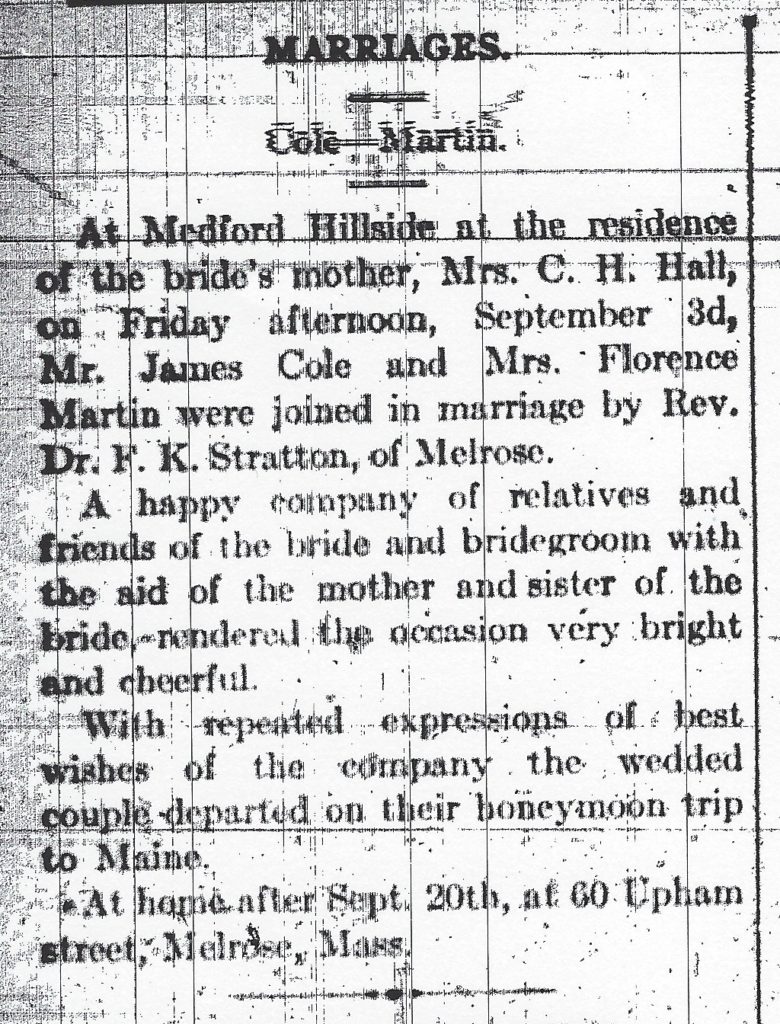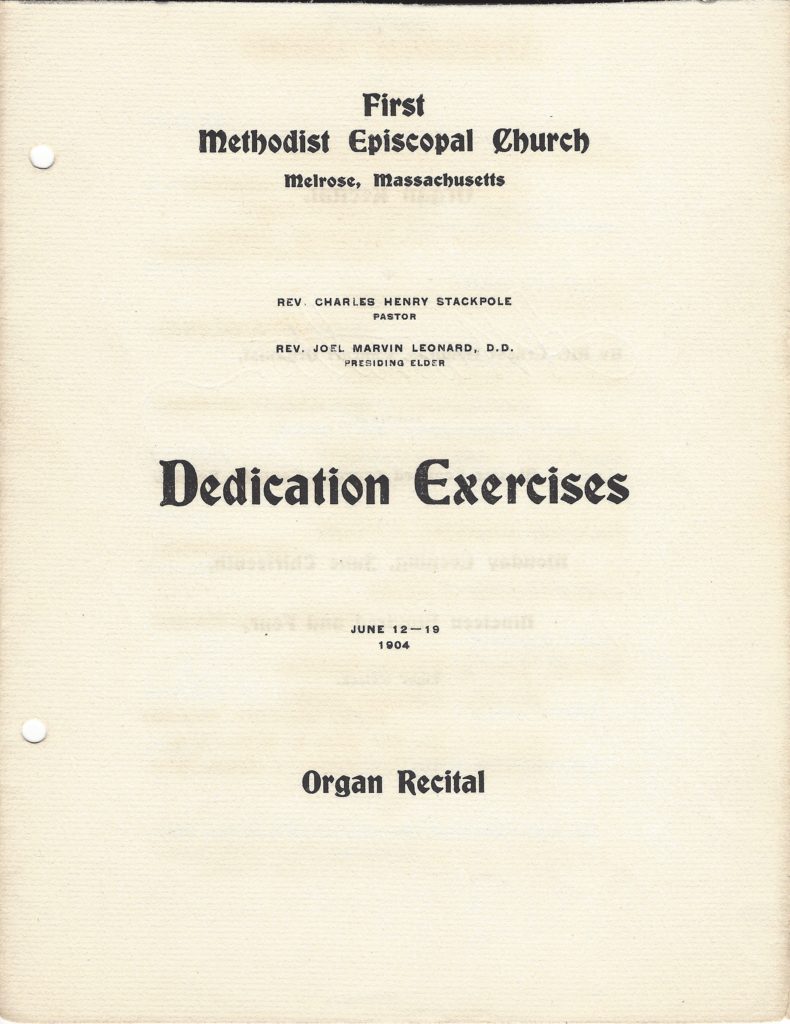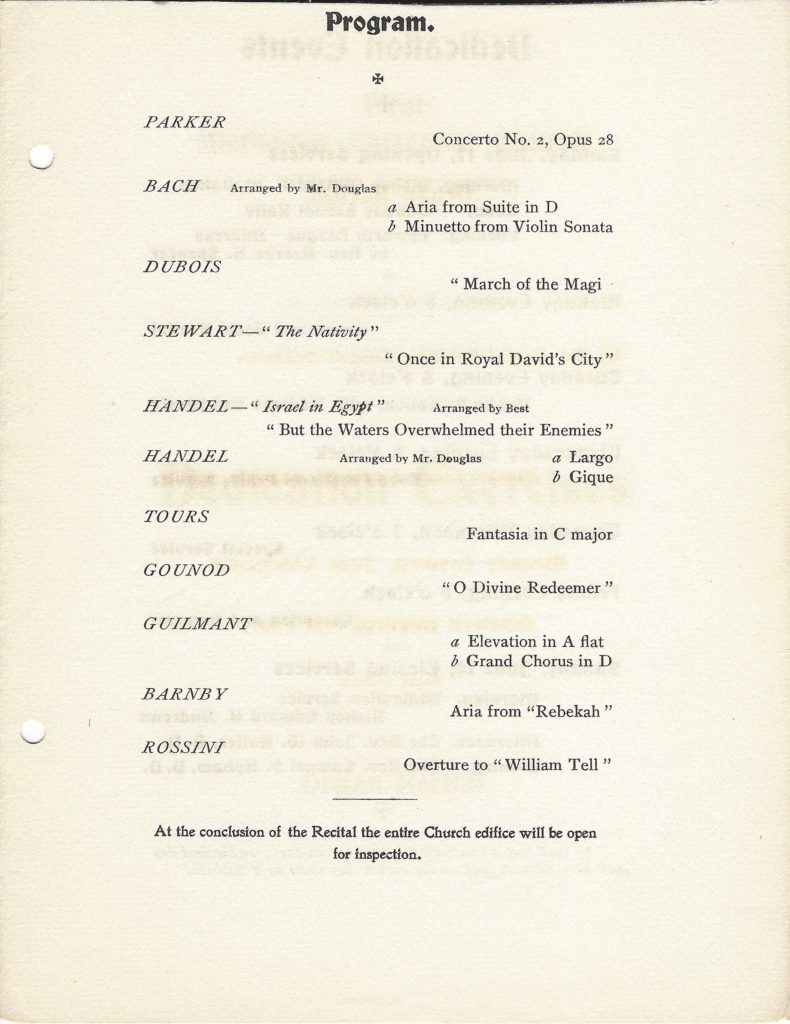James Cole & the organ @ FUMC
From Jim Bennett, FUMC Historian:
James Cole built the organ on the third floor of 223 Tremont Street, just a couple blocks from our church. Known as the Waverley Building, it is an iconic historic structure in Melrose and is located just across from the Cedar Park commuter rail stop. I have attached the Melrose Historical Commission’s inventory form on it.
Cole, a native of Manchester, England, who immigrated to this country as a child with his parents, was living in Melrose at the time, at 60 Upham Street, a walk of five minutes or less from the church. Andrew, you asked if he ever played our organ in a public capacity. I haven’t found any documents that prove that he did, but he lived so close to our church that he could have heard the organ from his house on a Sunday morning, which suggests to me that he did.
As the attached notice from the Melrose Free Press details, on September 3rd, 1915 he married Florence Martin in the home of her mother in Medford. The presiding minister was Dr. F. K. Stratton. Stratton was a Methodist Episcopal minister with a long association with our church. At one point he was an associate pastor, although I don’t know what his status was in 1915. Neither Cole nor his wife were members of the church, so if I had to propose a theory, it would be that the couple wanted a private ceremony when they married, and they turned to a clergyman whom they liked and trusted to do the honors, a Methodist pastor who lived in their neighborhood. Cole might have first met him when he was installing the organ in our church.
Cole died in 1934. Disappointingly, there was no obituary. He was buried at Forest Hills Cemetery in Boston.
Now, as for the organ, the evidence presents a dilemma. I have spent some more time in our archive, and I have also combed through every issue of the Melrose Free Press from 1915, As there is no mention anywhere of an organ being installed in 1915, I have come to question the idea that such an installation took place, partly because of the lack of evidence from 1915, and partly because of the overwhelming evidence that there was an impressive organ installed when the church first opened in 1904.
In the safe there is handwritten note which says that the estimated cost to be paid in 1904 to the architect of the new church, J. William Beal, for an organ was $3500. This was a large sum for an impressive instrument; an inflation calculator would give it a value of about $100000 today. Moreover, the attached scanned images of the organ recital concert that marked the opening of the new church building clearly demonstrate that the organ was an important attraction in the new facility.
In summary, we know that an expensive new organ was a built-in part of the church constructed in 1904. If that organ had been damaged in such a catastrophic way that it warranted a complete replacement in 1915, it would have turned up in church records and the public press in 1915. I therefore conclude, barring conclusive evidence to the contrary, that the organ was constructed in 1904 (with some replacements made in 1915, perhaps), at a cost of $3500.



